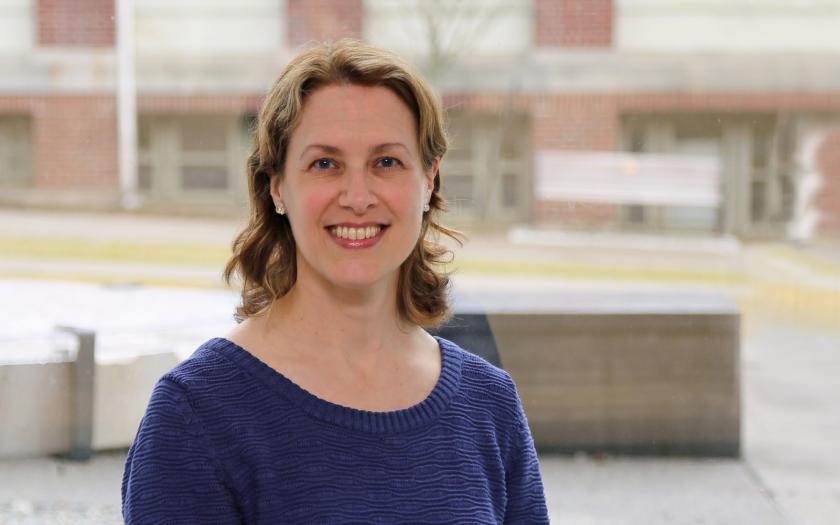July Faculty Spotlight - Diane Hoffman-Kim

Diane Hoffman-Kim began working at Brown as an Assistant Professor in 1998. She received her Bachelor of Science in Optics Engineering from the University of Rochester, her PhD in Medical Science from Brown University, and her postdoctoral training from MIT, Harvard, and the Bunting Institute. Prof. Hoffman-Kim teaches courses in tissue engineering and biomedical engineering. Much of Prof. Hoffman-Kim’s work has received funding grants from the Department of Veteran Affairs, National Science Foundation, and National Institute of Biomedical Imaging and Bioengineering at the National Institutes of Health.
Photo Credit: Amy Simmons / Brown University
1) When did you know you wanted to be a biomedical engineer/researcher?
I always liked math and science, but when I was a freshman in high school in the 80s, my dad suffered a major heart attack in his 30s. I read about an artificial heart that was just being developed at that time and it made me think, “What if one day I could do something like that?” That seemed very cool to me so that was what started me on this path. There is a funnier story, though. When I was a freshman in college I was in the chorus and I really wanted to go on a spring break trip to Florida so I got a job Xeroxing papers for a research lab. Then I showed up on time enough, so when they needed a student researcher for the summer they asked me if I wanted to take a research job in this biomedical and electrical engineering lab.
2) Of all of the publications you have written, is there one that you are most proud of? Why?
The most recent one, of course. I think it’s always the most recent one because that’s the work that’s freshest and most exciting at the moment plus the people are still here or have just moved on, so there’s fondness there. Molly Boutin worked on most of it as a graduate student but then she graduated, so the revisions were done by an undergraduate (and concurrent Master’s) student, Liana, who Molly had trained and she became second author on the paper. The paper shows that cortical spheroids, a type of neuron that has characteristics similar to the entire cortex and often referred to as “mini-brains”, spontaneously form vasculature. This is exciting because it opens up the possibility of these sort of models of the brain having much greater applications in studying treatments and drugs and representing how the brain might be affected by them since the vascular system of the brain is so vital to its function.
3) Did you ever do experiments that didn’t work?
Yeah, probably weekly or monthly! That’s what lab meetings are for. People bring frustrations or disappointments, and it’s my job to guide them to through why it didn’t work and new ideas. We work through determining if it was just a human error that needs to be addressed or if it’s science trying to tell us something. Sometimes we have experiments that don’t work for seemingly trivial reasons but these normally have an impact too. For example if some material was stored improperly and that failed experiment causes us to learn how to store that material so that we can then use it to further our research, that is still an important thing to have learned. I really value honesty in people in my lab because these errors and these failures happen and they’re a part of research and life but I want to know that my students are going to be honest and upfront when something goes wrong and honest about what they think might have caused the error.
4) How do you choose the projects your group works on?
We often start on a path from an idea and then see how that’s going and shape our work to take that path where we want it. The ideas are often sparked by students. We have a student that was very passionate about women’s health and this interest has caused development of one of our most active research areas right now. This student when to the trouble of separating male and female rats, which allowed us to then produce separate “mini brains” from each gender and study the differences in responses to stroke. We can also then study if there are drugs that evoke different responses in different genders.
5) What three qualities are most important for ensuring success as a young researcher?
Resilience, persistence, curiosity